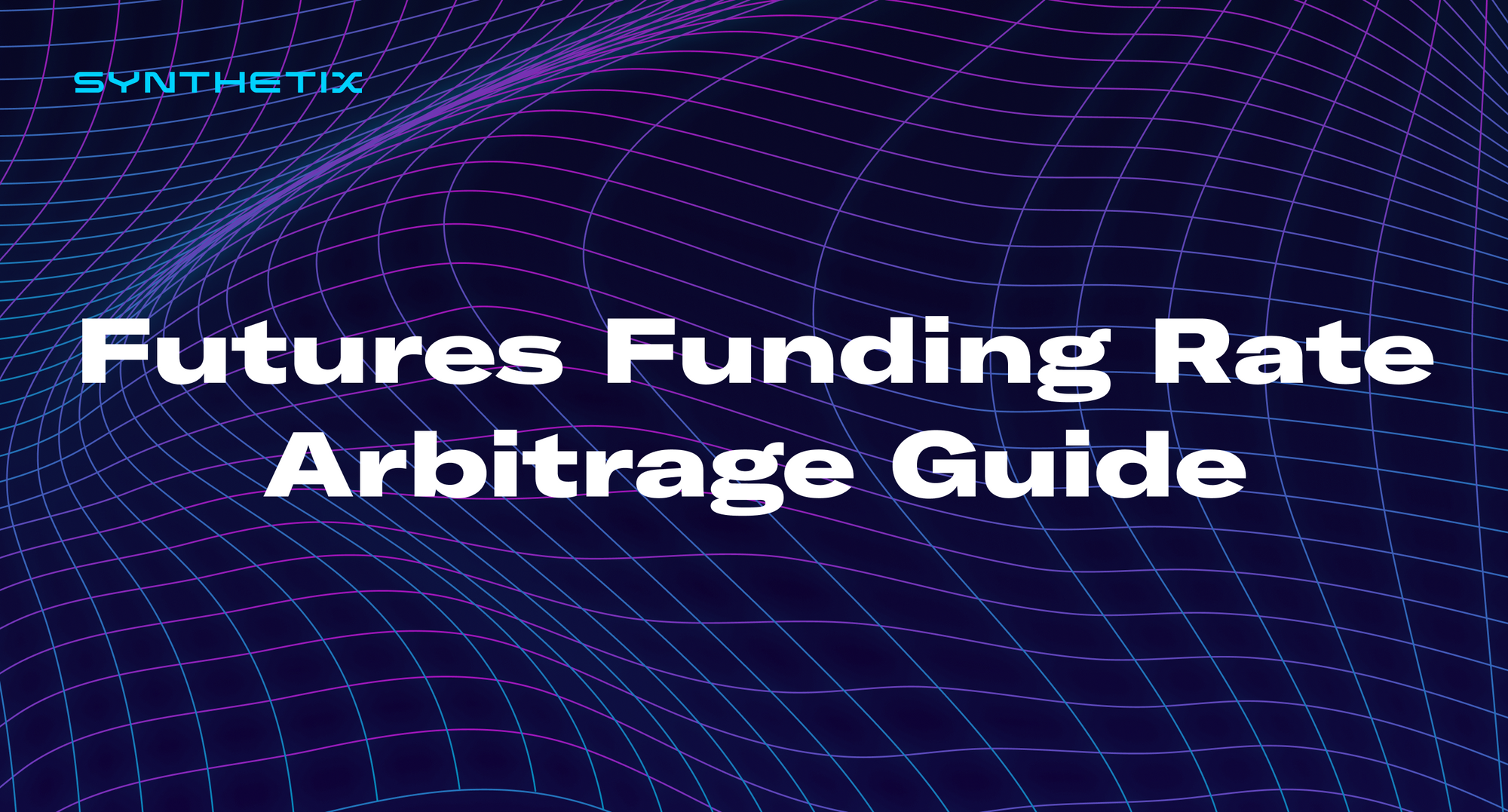Futures Funding Rate Arbitrage Guide

All funding rates may be outdated and were calculated on May 6th, 2022.
What is Futures Funding Rate Arbitrage
Futures funding rate arbitrage is when you long one futures market and short on another and collect the difference in funding rates.
Specifically, within the Synthetix Ecosystem, the funding rates on Synthetix Perps beta available via Kwenta are currently long-skewed and present an arbitrage opportunity for traders.
What are funding rates?
Like traditional Futures, perpetual Futures allow traders to speculate on the future price movements of assets, with the key differentiation being that perpetual Futures do not carry expiration dates.
Because of these differences, exchanges implement a funding rate mechanism that helps balance perpetual swaps' short and long positions by either incentivizing or discouraging traders. Funding rates help balance the demand for the short and long sides of these derivatives, keeping the perp price in line with its underlying spot price.
Funding rates vary as the derivatives price deviates in either direction of the underlying assets. Traders will either pay or receive funding rates depending on their open positions: when the funding rate is positive (trading above the underlying asset price), the longs pay the shorts, and vice versa. Due to these unique mechanics in futures trading, there is an incentive to arbitrage the funding rate difference between Synthetix Futures (through frontends like Kwenta) and other platforms.
Benefits of Funding Rate Arbitrage
Potentially Higher Returns: Typically, returns for ETH/BTC/etc. in staking and yield farming are relatively low (1-6%). There are many times when funding rate arbitrage yields are much higher due to the amplification of returns with leverage (20%+).
Lower Risk: If you go long and short on the same position, you're successfully hedged against the risk of price movements. The strategy is not free of risk; liquidation risk, penalties, oracle, and protocol risk are always present.
Beneficial to the Protocol: The traders collect funding, debt pool risk is reduced, and the rest of the traders get a lower funding rate.
Funding Rates Arbitrage Opportunity - A Current Example
Kwenta ETH funding:

In the picture shown, the funding rate is positive, which means longs pay shorts.
DYDX ETH funding:

In the picture shown, the funding rate is negative, which means shorts pay longs.
See the difference in funding rates between the two? That's a potential profit opportunity. In this scenario, someone could short ETH on Kwenta and long ETH on DYDX and collect the funding rate between the two protocols.
Here's how you would calculate the potential profit opportunity:
Funding Rate on Kwenta: .005201+% x 24 x 365 = 45.56% paid to ETH short (positive rate means longs pay shorts)
Funding Rate on DYDX: .001045-% x 24 x 365 = 9.15% paid to ETH long (negative rate means shorts pay longs)
Short ETH on Kwenta: $25,000 (initial capital) x 5x leverage = $125,000 x 45.56% = $156 Daily
Long ETH on DYDX: $25,000 (initial capital) x 5x leverage = $125,000 x 9.15% = $31 Daily
Net Total Revenue = $187 Daily
Kwenta and DYDX ETH Fees
Kwenta: 125,000 x .0025 = $312.5
DYDX: 125,000 x .0010 = $125
Total Fees = (312.5 + 125) x 2 = $875
Fees are calculated when opening and closing the position; you must double it to calculate the total fees for the entire position.
In this scenario, you begin to profit from this strategy after approximately 5 days.
Net Daily Profit = $187 per day (after 5 days) or 136% APY
Both sides of this trade would be profitable and net you about $187 a day (136% per year) because of the usage of leverage to amplify returns.
Note: Funding rates fluctuate as the futures skew changes. These rates are not stable.
Cash and Carry - Funding Rate Arbitrage
What are Cash and Carry Trades?
A cash-and-carry trade is an arbitrage strategy that exploits the mispricing between the underlying asset and its corresponding derivative. (Read more on Investopedia, thanks to them for the explainer)
Example: ETH futures and ETH spot
Understanding Cash-and-Carry Trades
A cash-and-carry trade is a trading strategy that an investor can utilize to take advantage of market pricing discrepancies. It usually entails taking a long position in a security or commodity while simultaneously selling the associated futures derivative. (Read more on Investopedia, thanks to them for the explainer)
In practice, you'd purchase the spot version of the asset and short the Synthetix Perpetual Future of the same market. In this scenario, you'd collect the funding rate if the market is long-skewed and shorters are currently being paid to short.
Cash and Carry - A Current Example
Kwenta ETH funding:

A cash and carry trade is potentially profitable when the funding rate is positive. In this scenario, you'd short the asset on Kwenta and then purchase the same amount of ETH to hedge yourself from price fluctuations.
As of right now, the funding rate paid to someone shorting ETH on Kwenta is 45.56%.
Here’s a quick calculation:
You’d be able to make approximately 45.56% net any fees to open futures positions/open spot trade. The downside of a cash and carry trade is that you'll need to have much more capital on hand and aren’t able to use leverage for the spot side of your trade.
Risk warning:
Cryptocurrency trading is subject to high market risk. This guide is provided for research purposes only. Do not
Any Questions
If you've got any comments or questions about these incentives, please join the conversation on Discord.

